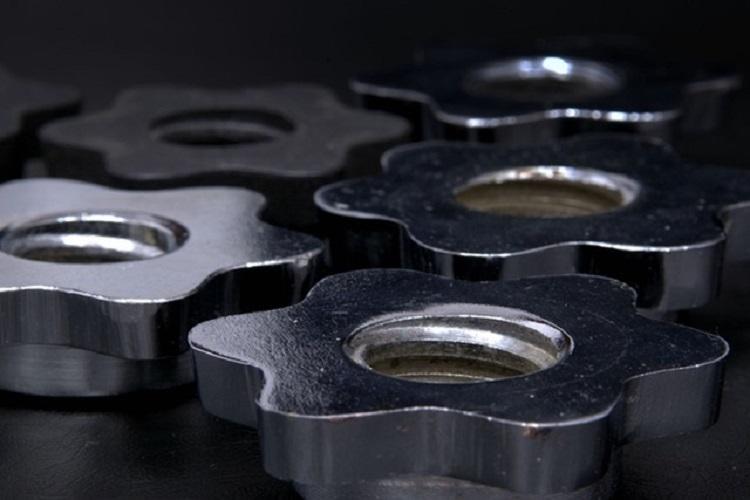The coining of the term ‘internet of things’ is as old as the millennium bug. However, as we know it, the technology has been around for several decades since the inception of the internet. In the early 70s, a Greek-American scientist, Theodore Paraskevakos, invented the earliest known IIoT device: The smart meter. This automatic meter reader collected consumption and diagnostic data from energy metering devices and transmitted it to a central database for billing purposes. In the early 90s, the first toaster was connected to the internet.
The earliest example of the use of IoT in the Indian enterprise space – much before the evolution of start-ups – was in the manufacturing sector. It was a proprietary product developed by the IT team at a tractor manufacturing company led by its then Director-ICT and Supply Chain-Head, Avinash Arora. The technology that was embedded into their tractors was used by farmers to track the health and performance for better maintenance, operations, and productivity. Skywatch was feeding this data to the company’s ERP, alerting farmers when the next servicing of the tractor was due, and inform them when a part of the tractor went rogue. It was one of the first few success stories of IoT in the enterprise space.
Since then, the importance of IoT has only grown in Indian enterprises. The history of technology is proof that leaders have a tendency to label a trend as ‘hype’ when they don’t understand its relevance in their industry. This also happens when a particular technology is ahead of its time. IoT, also, has been through this phase and its longevity and reputation has been established as an enterprise’s ticket to the future. It has transformed from being an industry buzzword a few years ago to becoming one of the disruptors in the space. Automotive, Healthcare, Manufacturing, Retail, Transport and Utilities – six verticals are investing heavily in IoT as others are still playing catch up. Many forward-looking companies from these verticals have even appointed Chief IoT Officers to ascertain their faith in the technology.
According to a recent Gartner report, as IoT expands its senses, the CIO will be asked to step up and lead the effort. “They are uniquely positioned to succeed in a product development role, as long as they equip themselves with the right knowledge, surround themselves with the right team, and work with others in the organization to set the appropriate goals and expectations,” the report further said.
In three years, Gartner predicts that more than 10% of new IoT products from traditional industries will be headed up by the CIO. They will not only exploit IoT to improve efficiencies, save costs and enhance asset utilization, but also use the benefits to alter customer experience or improve revenue.
However, a few CIOs in India have already embarked on their IoT journeys a long time ago. One of them is Jindal Steel and Power Limited’s Group CIO, Vipul Anand, who is using the power of IoT, advanced analytics, and people to future proof its business.
The power of IoT in steel
Angul in Orissa is ‘rich’ in every sense of the word. Not only does it have an average literacy rate of 80% (higher than the national average of 59.5%), it has abundant mineral reserves and is home to over 12 steel and power plants.
The plate mill manufacturing plant that belongs to the USD 11 billion Jindal Steel and Power Ltd (JSPL) is – “fully IoT driven duly interfaced with the SAP systems and analytics and mobility layer of our solutions,” says Anand.
“IoT has opened up huge opportunities to enterprises to help improve upon the efficiency, reduce wastages, enable innovations and speed up their digital transformation journey – if implemented properly,” he says.
Steel making is a fairly complex process – comprising a mix of legacy system as well as state-of-the-art manufacturing machines. To make steel, iron ore is first mined from the ground. It is then smelted in blast furnaces where the impurities are removed and carbon is added. It involves continuous monitoring the 24×7 manufacturing process and take immediate or time-bound corrective actions whenever necessary. This makes the job of a plant worker highly tedious.
The implementation of IoT framework by an in-house team of trained and highly-skilled team of IT professionals – led by Anand – has made this job exceedingly simple.
What JSPL has done at its Angul plant is enable an Industrial Internet of Things (IIoT) setup by creating a network of machines, advanced analytics, supply chain and people. The World Economic Forum, in its 2015 report, called IIoT— the latest wave of technological change that will bring unprecedented opportunities, along with new risks, to business and society.
Read: How Happiest Minds is using IoT to build a smart workplace
“The IoT framework helps the steel plant work smart,” says Anand.
The framework helps the plant workers at the JSPL Plant in Angul to monitor the health and status of the machines. It also provides the interoperability of mobile devices with control systems to ease real time remote management.
“The IoT allows the real-time process monitoring and control on local network and creates an interface to the mobile devices and analytics layer,” says Anand.
As a result, the plant’s efficiency and productivity have significantly improved.
For instance, the new IoT framework generates automatic alerts for preventive maintenance of machines and sends them to remote devices with corrective measures based on large historical data analysis. The analytics platform helps generate these patterns that emerge from the IoT data that are early indicators of future failures, enabling them to implement predictive maintenance and reduce the number of scheduled service visits.
“This has averted instances of unplanned system shutdowns and has helped us ensure high availability and uptime of machines with almost no loss of productivity,” says Anand.
The in-house IT created over 29-odd APIs (between OT and IT) in order to interface their plate mill machinery (OT systems) to their SAP (IT systems). “Our talented technical expertise with a hard working and innovation driven mindset has helped us become pioneers in adoption of new tech – especially in the steel sector,” says Anand.
Also read: Wanbury’s golden batch is powered by IoT
As a result, it has given the steel manufacturer better visibility of finished goods, semi-finished goods and raw materials remotely.
And the opportunities are plenty. For the company’s plant, it resulted in a huge ROI as the IoT implementation helped them bring better efficiencies, lower downtime and improve quality and provide heavy cost benefits.
The risks and bottlenecks are as much. Anand says that there is still one issue that could prevent us from fully maximizing its power and the biggest reason for slow adoption of IoT: Standardization.
“Our manufacturing plants machinery supplied by world reputed OEMs have proprietary software, device drivers, protocols that need to be upgraded to the latest standards to enable them to work on an IoT enabled environment. While OEMs have to speed up on this, customers have to be open to accept and implement the interfaces required to put all this up,” he says.
Interoperability is another challenge and so is security. “As IoT matures, so will the availability of standard network protocols for devices as well as creating a secured environment for smart devices; it will overcome these challenges,” says Anand.
IoT will pave the way for JSPL. “My vision is to create an IoT Center of Excellence and get the right people to run it,” says Anand.
“The key to deliver improved operational efficiency, enable innovation and digitally transform one’s business is to make context-aware and relevant data accessible and turn the result into enterprise-grade, tangible business insights,” feels Anand.
As Anand sees it –this comprehensive vision includes IoT – but goes beyond it.
For other IoT stories, click here



